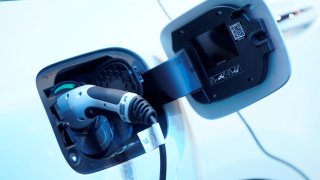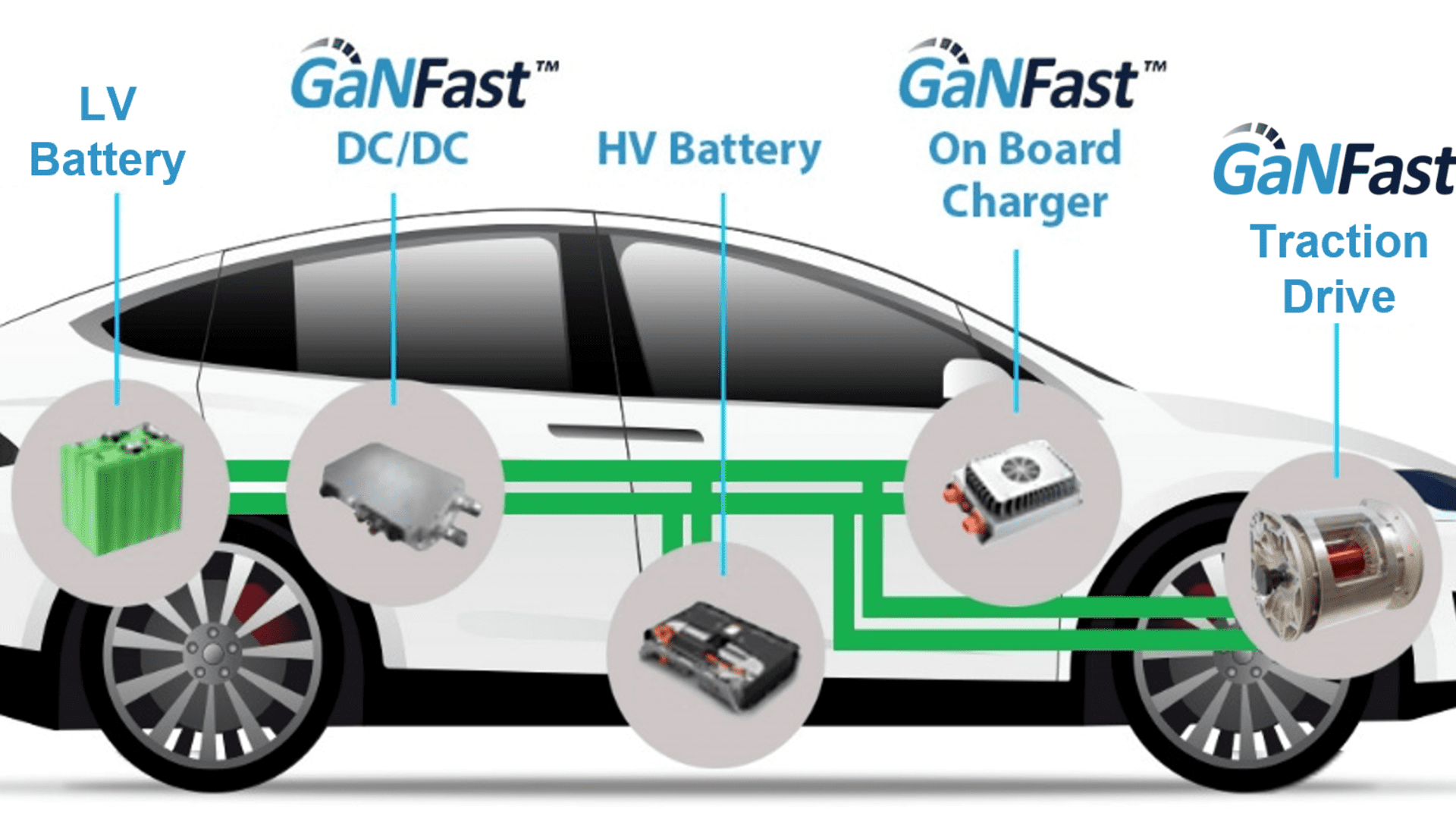
- Navitas Semiconductor, a company that makes the technology for super-fast phone chargers with gallium nitride semiconductors, says electric vehicles are its next big bet.
- A GaN semiconductor operates up to 20x faster than silicon and makes it possible to deliver up to 3x more power and 3x faster charging in half the size and weight.
- In January, Navitas Semiconductor, opened a center in Shanghai, China, to work with electric vehicle manufacturers develop their own GaN systems.
Navitas Semiconductor, a company that makes technology for super-fast phone chargers, says electric vehicles are its next big bet.
"The same thing we're doing at 50 watts for a phone or a tablet, we're going to do that for 5,000 watts or 20,000 watts to fast-charge your your EV," Navitas CEO Gene Sheridan told CNBC in a phone conversation.
With Navitas' technology, an electric vehicle could charge at a consumer's home in a third of the time it currently takes.
Get New England news, weather forecasts and entertainment stories to your inbox. Sign up for NECN newsletters.
As an example: "It will take about 10 hours to fully charge a Tesla. You can say, 'Well, that's overnight. I'm sleeping. It's no big deal,'" Sheridan said. "But there's times when you don't have 10 hours to get on the road."
If that same new technology is used inside the electric car, the car's range could be increased by close to 30%, or the size of the battery could be decreased by 30%, both advantages in their own way.
But we probably won't see it in new cars until at least 2025.
Money Report
What is gallium nitride?
Gallium is a chemical element on the periodic table and a natural by-product created in the refining of other metals, like aluminum. "For decades, there was no known use for this material," Sheridan said.
But when gallium is combined with nitrogen into gallium nitride (GaN), it's useful for the semiconductors that go into the charging units for consumer electronics devices. A GaN semiconductor operates up to 20x faster than silicon and makes it possible to deliver up to 3x more power and 3x faster charging in half the size and weight.
The technology is still relatively new, and not widespread yet because it's still more expensive and requires customers to redesign their entire charging systems. But Sheridan explains that the cost will come down as scale increases.
"Now, it's only 10 to 20% more expensive. Within two years, it'll be the same cost or cheaper," he says. "It's a powerful chip. But to do it right, you have to redesign the whole power system around that chip and that requires a lot of new skills."
Navitas works closely with its customers to help them make those changes.
"We actually are very hands-on with our customers. We create design centers — just for mobile chargers, just for data centers, just for EVs — to specifically help those customers design the entire next generation power system using our GaN chip, because we have experts on all the other stuff, not just the GaN chip, to help them do it. So there's quite a bit of learning curve."
In the last three years, Navitas shipped over 35 million units with its GaN technology to customers like Chinese smartphone brand and manufacturer Vivo, Dell and Chinese consumer electronics manufacturer Xiaomi.
To get to this point, Navitas has raised over $100 million in several rounds of funding and is bringing in revenues of about $20 million a year. The company is not profitable yet, but aims to be in 2023. In October, Navitas Semiconductor went public via SPAC and has a market cap of over $ 1 billion.
From cellphone chargers to electric vehicles
The initial focus for Navitas will be home charging systems for electric vehicles, which are "pretty darn slow," as Sheridan said, as opposed to publicly located supercharging stations.
But it could take years for Navitas to get electric vehicle makers to build GaN superconductor technology into their charging infrastructures and cars.
"You can't show up to an existing car and just drop it in and it magically makes things charge faster, be more efficient," Sheridan acknowledges.
It takes three to four years for electric vehicles to be developed, and so it will likely be 2025 before GaN-enabled electric vehicles will be shipping and on streets.
But that education and collaboration process with businesses has begun.
In January, Navitas opened a center in Shanghai, China, to work with electric vehicle manufacturers to develop their own GaN systems.
So far, no electric vehicle makers have publicly declared they are switching to GaN systems, but BRUSA HyPower — a power electronics supplier to top European players like Porsche, Audi and Volkswagen — has publicly announced a partnership with Navitas.
Benefits of GaN for EVs beyond charging
GaN supercondutor technology will do more for EVs than just make them charge faster.

Once the power gets into the battery in an electric vehicle, then it has to to the wheels. Right now, that's happening with silicon semiconductors. As the power travels from the battery to the wheels, 30% or more of the energy is lost in a transmission, Sheridan said.
If GaN superconductors are used in that transmission, then you can use a smaller battery or have the same size battery take a car further.
"I can't take all the energy lost to zero, but I can take a big chunk of that 30% of energy that's wasted and save it by a more efficient technology in GaN," Sheridan said.
"If you think about what holds any buyer back from EV, it is still more expensive than a gas car because the cost of that battery, so anything you can do to use a cheaper, lighter weight battery" will be beneficial for brining the price down, Sheridan said.
Other reasons that consumers are hesitant to switch to electric vehicles is "range anxiety," which could be helped by making the efficiency inside an electric vehicle better with GaN technology. "And then of course, you got the slow charging nature of this thing. It's just not as fast as filling up a gas tank. And so we're trying to close the gap on those three items."






